Crime & Punishment Books
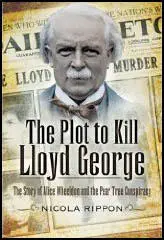
Title: The Plot to Kill Lloyd George
Author: Nicola Rippon
Editor:
Publisher: Pen & Sword
Price: £19.99
Bookshop: Amazon
Spartacus Website: David Lloyd George
Category:
On the morning of 31 January 1917, the Midlands town of Derby awoke to find itself the focal point of one of the most sensational developments of the First World War. Four members of a Derby family had been arrested and charged with conspiring to murder the Prime Minister, David Lloyd George, and a member of his War Cabinet, Arthur Henderson. The Old Bailey trial that followed gripped the nation. It turned out to be one of the blackest episodes in British political history - a provincial family had apparently been framed by a government desperate to discredit the pacifist movement. In this perceptive account of this disturbing case, Nicola Rippon describes in vivid detail the lives of Alice Wheeldon and her family, their extraordinary arrest and detention, and the conduct of the subsequent court case. She shows that, far from being potential murderers, the Wheeldons were almost certainly victims of a government plot aimed at discrediting the anti-war faction at a time when many people in Britain were beginning to turn against the conflict and question the justifications for it.
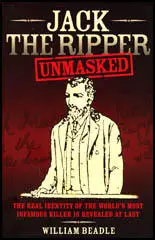
Title: Jack the Ripper: Unmasked
Author: William Beadle
Editor:
Publisher: John Blake Publishing
Price: £17.99
Bookshop: Amazon
Spartacus Website: Jack the Ripper
Category:
Had the Jack the Ripper murders taken place in 1988 not 1888 then our response to them would have been markedly different. Since those dark days in Victorian London we have learnt much about this type of killer: their damaged childhoods, misfit adulthoods and psychopathic alienation from the human race. But can this new knowledge help to solve a mystery that has been eluding generations of policemen and historians? William Beadle, using his Ripper psychological profile in conjunction with newly unearthed evidence, presents a compelling account with a fresh body of incrimination evidence that could finally answer the question of the true identity of the infamous Jack the Ripper.
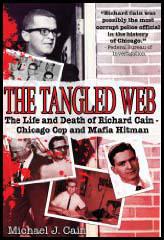
Title: The Tangled Web
Author: Michael J. Cain
Editor:
Publisher: Skyhorse Publishing
Price: £16.00
Bookshop: Amazon
Spartacus Website: Richard Cain
Category:
Here is the dramatic story of Detective Richard Cain's criminal career, as revealed by his half-brother. Cain led a double life—one as a well known cop who led raids that landed on the front pages, and the other as a "made man" in one of Chicago's most notorious mafia crime families. Michael Cain weaves together years of research, interviews, family anecdotes, and rare documents to create a comprehensive biography of this complex, articulate, and self-contradictory criminal genius. In a story that reads like the plot of Martin Scorsese's The Departed, Cain played both ends against the middle to become a household name in Chicagoland and a notorious figure in both the Mob and the world of Chicago law enforcement. Eventually murdered in a café by two masked men wielding shotguns, he lived and died in a world of bloodshed and violence. Cain left behind a story so outlandish that he has even been accused of being involved in the assassination of President John F. Kennedy. Filled with fascinating and until-now unknown facts, The Tangled Web tells the full story of this one-man crime wave.
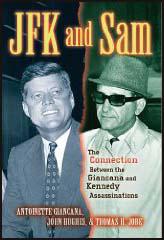
Title: JFK and Sam
Author: Antoinette Giancana, John R. Hughes and Thomas H. Jobe
Editor:
Publisher: Cumberland House
Price: £16.00
Bookshop: Amazon
Spartacus Website: Richard Cain
Category:
"JFK and Sam" is a tale of two murders. The first occurred in Dallas in 1963 and the second in Illinois in 1975. The first was ordered by Sam Giancana to avenge his betrayal by the Kennedys. Giancana had assured JFK's win in Illinois with the understanding that the new administration would go easy on the Chicago mob. Instead, Bobby Kennedy stepped up prosecutions. The second assassination was carried out by the CIA and the mob to prevent Giancana from testifying before the Church Committee hearings regarding his role in the CIA's plot to kill Fidel Castro. The irony is that both men were assassinated because of their relationship to each other and events that transpired from that relationship. "JFK and Sam" is unique from other books on the Kennedy assassination. Written by an insider with access to key figures, it names the assassins and traces the assassination team's movements in 1963. The first shot came from the Dal-Tex building (adjacent to the book depository) and struck Kennedy in the back of the neck. The second came from Giancana's driver who fired a CIA prototype handgun with a telescope (called a "fireball") from the grassy knoll, using a frangible bullet, which explains why there was such a massive wound to Kennedy's head. Lee Harvey Oswald was the fall guy and did not fire a weapon.

Title: The Strange Death of David Kelly
Author: Norman Baker
Editor:
Publisher: Methuen
Price: £9.99
Bookshop: Amazon
Spartacus Website: David Kelly
Category:
The death of the weapons inspector Dr David Kelly is considered by many to be "unfinished business". For this book, Norman Baker spent over a year in active research, receiving much new information from many sources. He shows that the Hutton inquiry verdict of suicide is not credible; he has the determination and courage to get to the truth of what really happened. "The Strange Death of David Kelly" looks in fascinating detail at the motives for the unlawful killing of Dr Kelly and the various possibilities of who could have been involved, before concluding with the most likely - but astonishing - scenario, revealed here for the first time. He analyses and criticises the official process after David Kelly's death, and looks into the actions of the UK government, particularly in relation to the Iraq war.
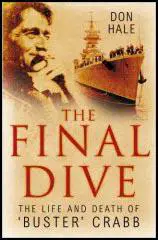
Title: The Final Dive
Author: Don Hale
Editor:
Publisher: Sutton
Price: £19.99
Bookshop: Amazon
Spartacus Website: Lionel Crabb
Category:
Commander Lionel 'Buster' Crabb was a British naval frogman who disappeared in 1956, under mysterious circumstances following a secret dive beneath a Russian warship bringing Soviet leaders Khruschev and Bulgarin to Britain. Now, fifty years after the event, Don Hale draws on exclusive interviews to tell the true story of Crabb's colourful life and who was behind his disappearance. Secret files documenting the event will not be released until 2057.
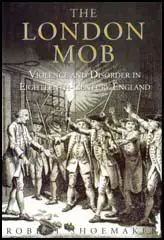
Title: The London Mob
Author: Robert Shoemaker
Editor:
Publisher: Hambledon & London
Price: £22.99
Bookshop: Amazon
Spartacus Website: Famous Crimes
Category:
By 1700, London was the largest city in the world, with over 500,000 inhabitants. Very weakly policed, its streets saw regular outbreaks of rioting by a mob easily stirred by economic grievances, politics or religion. If the mob vented its anger more often on property than people, eighteenth-century Londoners frequently came to blows over personal disputes. In a society where men and women were quick to defend their honour, slanging matches easily turned to fisticuffs and slights on honour were avenged in duels. In this world, where the detection and prosecution of crime was the part of the business of the citizen, punishment, whether by the pillory, whipping at a cart's tail or hanging at Tyburn, was public and endorsed by crowds. The "London Mob: Violence and Disorder in Eighteenth-Century England" draws a fascinating portrait of the public life of the modern world's first great city.
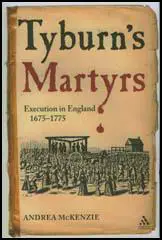
Title: Tyburn's Martyrs: 1675-1775
Author: Andrea McKenzie
Editor:
Publisher: Continuum
Price: £29.67
Bookshop: Amazon
Spartacus Website: Tyburn Tree
Category:
The public execution at Tyburn is one of the most evocative and familiar of all eighteenth-century images. Whether it elicits horror or prurient fascination - or both - the Tyburn hanging day has become synonymous with the brutality of a bygone age and a legal system which valued property over human life.But, as this fascinating cultural and social history of the gallows reveals, the early modern execution was far more than just a debased spectator sport. The period between the Restoration and the American Revolution witnessed the rise and fall of a vast body of execution literature - last dying speeches and confessions, criminal trials and biographies - featuring the criminal as an Everyman (or Everywoman) holding up a mirror to the sins of his readers. The popularity of such publications reflected the widespread, and persistent, belief in the gallows as a literal preview of 'God's Tribunal': a sacred space in which solemn oaths, supernatural signs and, above all, courage, could trump the rulings of the secular courts. Here the condemned traitor, "game" highwayman, or model penitent could proclaim not only his or her innocence of a specific crime, but raise larger questions of relative societal guilt and social justice by invoking the disparity between man's justice and God's.
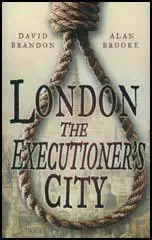
Title: London: The Executioner's City
Author: David Brandon & Alan Brooke
Editor:
Publisher: Sutton
Price: £9.99
Bookshop: Amazon
Spartacus Website: Cato Street Conspiracy
Category:
Tyburn Fields is the best known site of execution in London, but London may be aptly named the executioner's city, so many were the places where executions could and did occur. "London - The Executioner's City" reveals the capital as a place where the bodies of criminals defined the boundaries of the city and heads on poles greeted patrons on London Bridge. The ubiquity of crime and punishment was taken for granted by countless generations of the capital's inhabitants, though it seems to have done little to stem the tide of criminality that has always threatened to engulf the city. The book is a powerful evocation of the dark side of London's history, where the great and not so good, the poor and helpless, the cruel and the idealistic crowd together to be punished in public. A King and more than one Queen, heretics, archbishops, pirates, poisoners, plotters, murderers and a cook executed for selling putrid fish met death by hanging, beheading, burning or boiling in London, and on most occasions the crowd roared its approval. David Brandon and Alan Brooke's book is a vivid picture of capital punishment in a capital that seems to have thrived on executions.
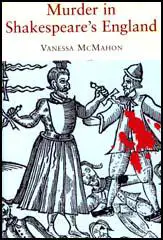
Title: Murder in Shakespeare's England
Author: Vanessa McMahon
Editor:
Publisher: Continuum
Price: £14.99
Bookshop: Amazon
Spartacus Website: The Tudors
Category:
Fascination with murder is not a modern phenomenon. People in the past were just as interested in extreme violence and homicide as people nowadays. In seventeenth-century England all excessive and gratuitous violence was condemned and prosecuted, with murderers being categorized as particularly wicked. The courtrooms where murderers were tried were packed and crowds attended their execution. Ballads about notorious cases and prints reflected the huge interest such cases generated. Yet, in a world with no police and little forensic expertise, identification, pursuit and prosecution presented many difficulties. "Murder in Shakespeare's England" looks at a series of murder cases, ranging from brawls to infanticide, and including serial and sex killings, to paint a picture of how murder was committed, discovered and punished in Stuart England.
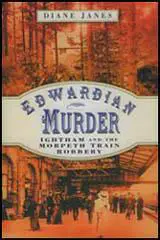
Title: Edwardian Murder
Author: Diane Janes
Editor:
Publisher: Sutton
Price: £14.99
Bookshop: Amazon
Spartacus Website: John Dickman
Category:
Caroline Luard was shot near Ightham in Kent in 1908. Within weeks, her husband, the respectable Major-General Charles Luard, committed suicide. It was rumoured that he killed himself following a tip-off from the local chief constable that he was about to be arrested. In 1910, John Nisbet, a colliery cashier, was robbed and murdered on a train in Northumberland. Three days after the crime, police arrested a man called John Dickman, who was subsequently executed. The conviction, however, relied on circumstantial evidence. In 1950, C. H. Norman, who acted as official shorthand writer at Dickman's trial, claimed that Dickman was framed for Nisbet's murder, because the judge and prosecuting council believed him guilty of the murder of Caroline Luard. Is it conceivable that John Dickman was guilty of both murders? Or was he framed, and unjustly executed? This new book provides the definitive account of both murders. Including previously unpublished evidence, it is a compelling read, vividly recreating the atmosphere of the Edwardian age. These true crimes bear all the hallmarks of traditional English period murder: steam trains, revolvers, an isolated summerhouse, retired army officers, parlour maids, to say nothing of conspiracy theories, murder, suicide, an execution and a love story.
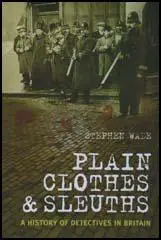
Title: Plain Clothes & Sleuths
Author: Stephen Wade
Editor:
Publisher: Tempus
Price: £16.99
Bookshop: Amazon
Spartacus Website: Famous Crimes
Category:
The detective is a familiar figure in British history, from the Victorian truncheon-bearing bobby to the undercover sleuth of the twenty-first century. But there is much in the history of our investigative police force that remains in the dark. Using detective training manuals, Home Office enquiries, Parliamentary papers and unpublished memoirs of retired detectives, Stephen Wade looks at famous cases such as the Ripper murders and the beginnings of the Special Branch and Detective Branch of Scotland Yard. His fascinating history covers aspects of crime history that have not yet been written about, including the career of Jim 'the Penman' Saward, a notorious forger, the detectives who were corrupted during the hunt for him and the infamous Trial of the Detectives of 1876 - a massive corruption trial involving six Scotland Yard detectives. It was this that led to the creation of a professional Scotland Yard as we know it today. Appealing to criminologists, social and crime historians and, most significantly, readers of crime fiction and true crime, this new history is a vital part of our crime heritage.
